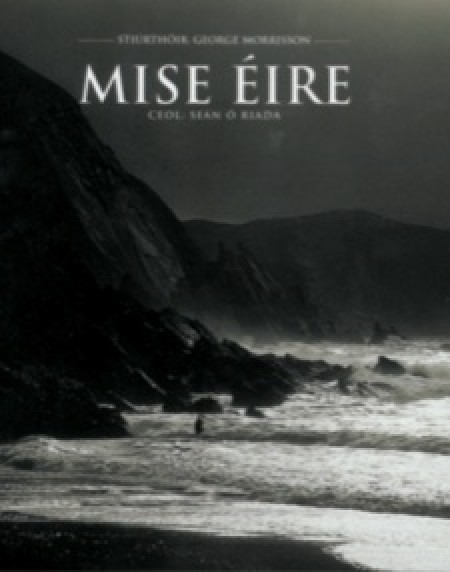Niall O’Dowd writes on the re-release of Mise Éire, which documents the birth of the Irish Nation.
Every schoolchild in Ireland in the 1960’s saw Mise Éire (I Am Ireland), the Irish-language film which chronicles, in extraordinary detail, the birth of the Irish Nation. I saw it again recently and realized what an incredible piece of film it is. The good news for the Irish in America is that it is now available on DVD with English subtitles.
Mise Éire was produced in 1959 by Gael Linn, the Irish-language and culture advocacy group. The documentary, made by the legendary George Morrison, used archival records previously unexplored, and is a rich treasure trove. Perhaps the most stunning footage revolves around the Easter Rising. We see the build-up to that event, including the 1915 funeral of O’Donovan Rossa, the old and last Fenian leader whose death in America after years of abuse in a British jail became a major rallying cry for the nascent Irish freedom movement.
We see O’Donovan Rossa’s gaunt face in the coffin. We see his wife and daughter accompanied by James Connolly as they attend the wake. At the graveside we see a young man dressed in military fatigues about to make the famous graveside oration (“The fools, the fools, they have left us our Fenian dead.”) It may be the only documentary footage ever made of Patrick Pearse.
In the North we see the storm clouds gather as Dublin-born Sir Edward Carson whips the Unionists into a state of utter hysteria over events in the South. We see hundreds of thousands of Loyalists gathering to sign the blood covenant which says they will never allow a united Ireland, and the aftermath of their gun running at Larne in 1914, which began the move to militarism in both parts of the island.
The response in the South is also shown – the gun-running at Howth and the subsequent slayings when British troops fired into a crowd at Bachelor’s Walk in Dublin. The film of the protest march which follows that event shows the great trade union leader James Larkin and Countess Markievicz, leader of Cumann Na mBan, the female paramilitary group set up alongside the IRA.
There is priceless footage of the Irish volunteers and the Irish Citizen Army in training, as well as an amazing closeup of Tom Clarke, the first signatory on the 1916 Proclamation, and in many ways the inspiration of the 1916 Rising.
On the morning of the Rising, Irish volunteers are shown marching towards the city center to their date with destiny. We see the British troops flood the city to quell the Rising, and many scenes that show casualties and the destruction that happened throughout Dublin.
We see the surrender order as it was signed by Patrick Pearse and the prisoners being marched off. The footage showing the return of those prisoners from England a few years later as the Sinn Fèin movement begins to sweep the country, is remarkable, as is the footage showing the hundreds of thousands who turned out to great Countess Markievicz, who is shown being driven through huge crowds in central Dublin.
There is also extremely rare footage of the W ar of Independence. Michael Collins is shown making his famous address at the graveside of hunger striker Thomas Ashe. (“The volley we have just heard is the only speech which it is proper to make above the grave of a dead Fenian.”) There is also footage of Eamon de Valera as he campaigns in the election that saw Sinn Féin sweep aside the Irish Party.
Mise Éire features an original score by the legendary Irish composer Sean O Riada who led the incredible revival of Irish traditional music in the 1960s, and gave us Ceoltoiri Cualann, the forerunners of the Chieftains and every traditional music performer since.
O Riada’s soundtrack became one of Ireland’s defining pieces of music, but it is the archival footage that is the most fascinating part of Mise Éire. Viewers have the opportunity to witness the birth of a nation, akin to being present during the American Revolutionary War.
In the early part of the documentary, we see an actual Famine-era photograph. Taken in Cork, it is, as far as I know, the earliest Irish photograph on record. We also see anguished scenes at evictions and the beginning of the Irish revival after the dreadful Famine era.
Mise Éire covers every major topic that led to the birth of the Irish Nation, and I cannot think of a more valuable resource.
For information on ordering Mise Éire contact Gael Linn, Caitríona Nic Giolla Mhichíl. Tel: 011 353 1 6751200. E-mail: caitrionag@gael-linn.ie ♦


Leave a Reply